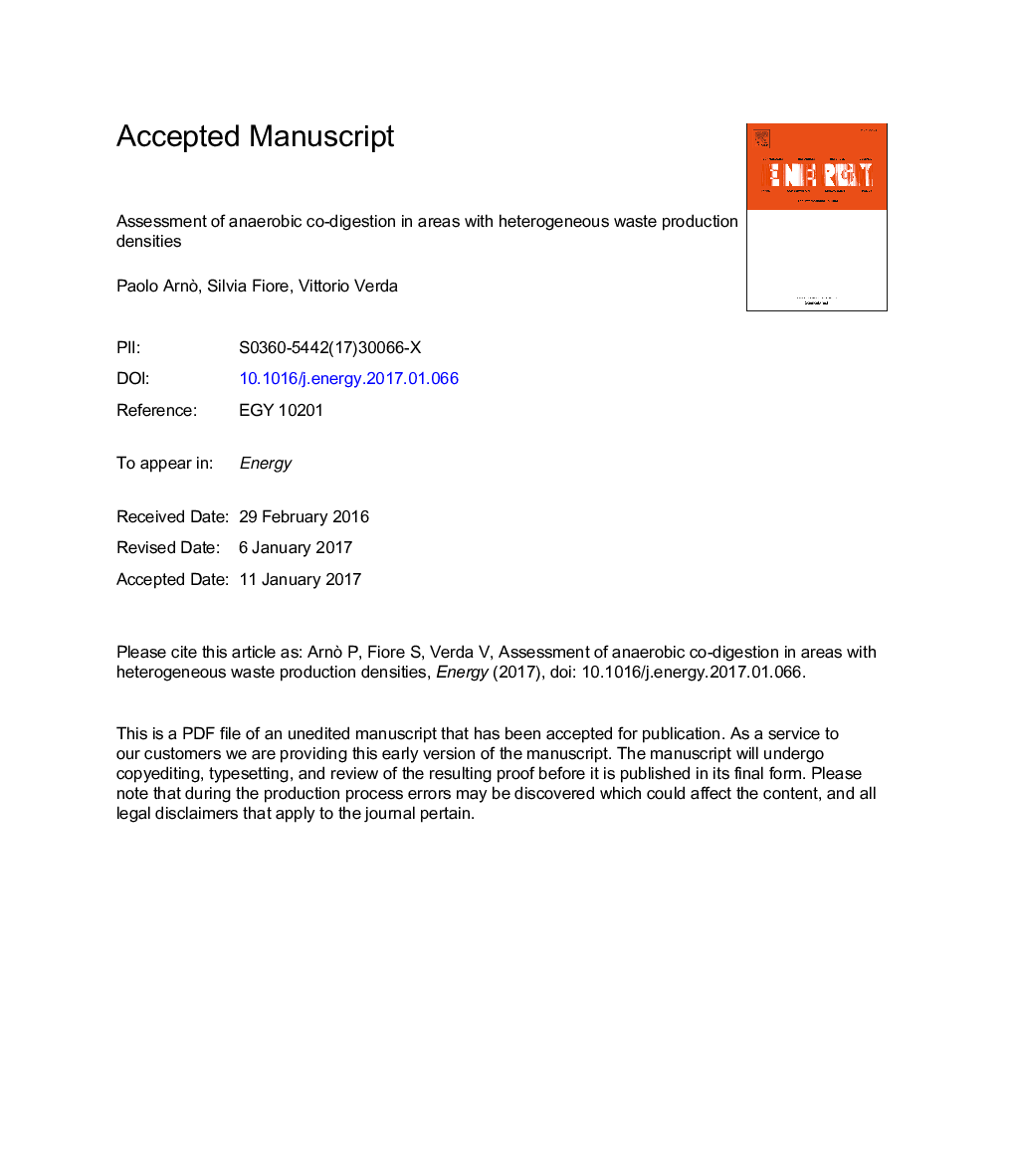| Article ID | Journal | Published Year | Pages | File Type |
|---|---|---|---|---|
| 5476251 | Energy | 2017 | 56 Pages |
Abstract
The investigation of technical and economic feasibility of anaerobic digestion in areas characterized by heterogeneous waste production densities is a crucial problem that needs to be carefully addressed. This research proposes a simple and flexible methodology for energy, economic and environmental analysis of wet and dry processes involving organic fraction of municipal solid waste (OFMSW) and sewer sludge as feedstocks, with biogas or bio-methane valorization in combined heat and power (CHP) units. Compared with existing literature, this methodology is a good tradeoff between the accuracy and amount of input data related with the territory, which is here limiter to the waste production density. The approach was applied to three areas in Italy, characterized by different population densities and socio-economic development, and therefore by variable waste production specific potentials. A comparison with the current waste management system was performed considering energy demand, investment and operational costs and equivalent carbon dioxide emissions. Results show that, with the current Italian subsidies, a wet process and bio-methane production is in general the best choice, but sufficiently large plants (>500Â kW) are necessary. When smaller plants are preferred, a dry process with use of biogas in cogeneration systems may be better, particularly for areas characterized by limited waste production density (<4Â t/y.km2). Concerning the environmental aspects, the best option in terms of greenhouse gas emissions is bio-methane production for all considered scenarios.
Keywords
Related Topics
Physical Sciences and Engineering
Energy
Energy (General)
Authors
Paolo Arnò, Silvia Fiore, Vittorio Verda,
